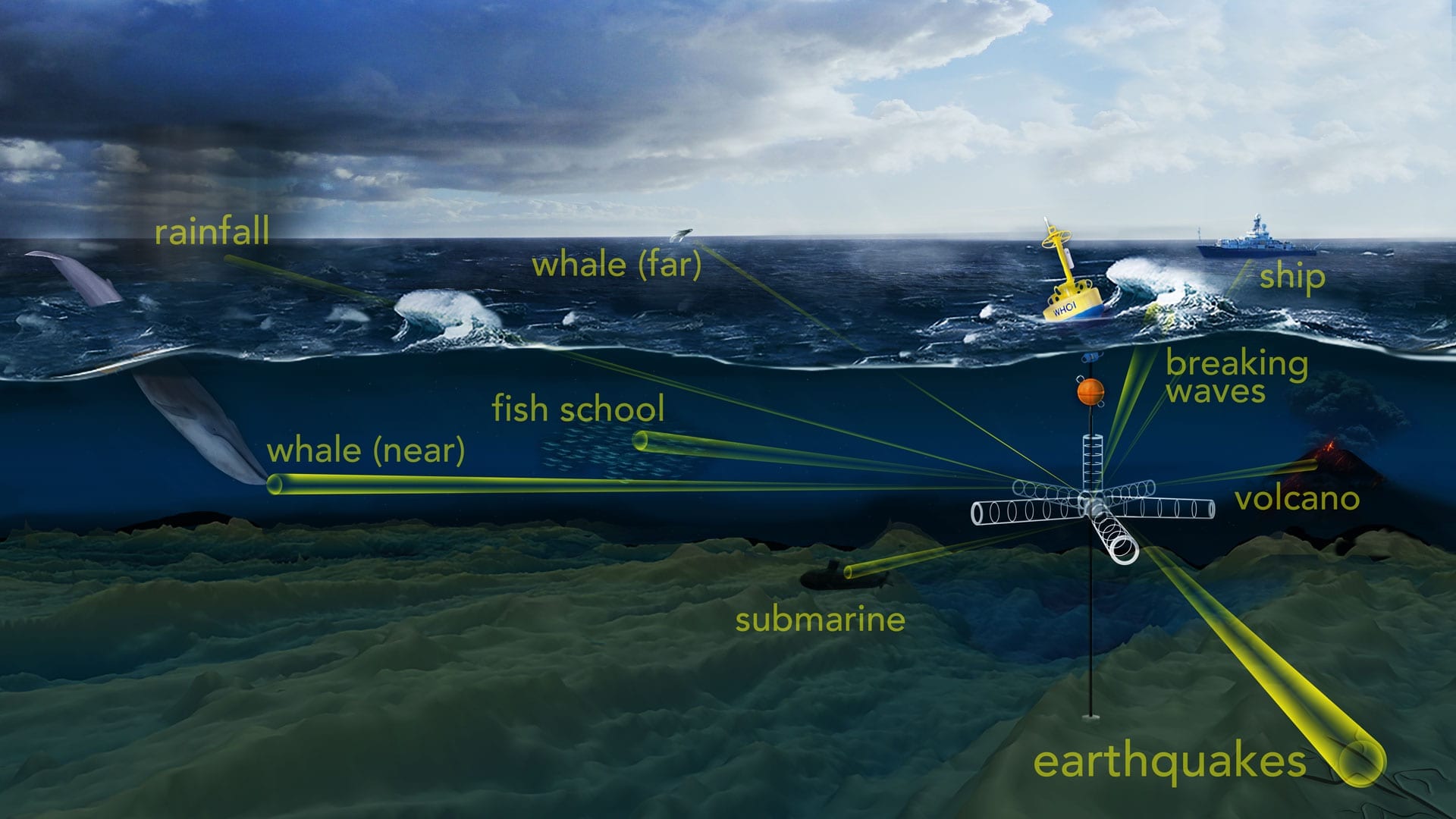Could listening to the deep sea help save it?
A recent New York Times article about sound in the deep ocean briefly mentions the work by Woods Hole Oceanographic Institution (WHOI) acoustic scientist Ying-Tsong “YT” Lin and his work developing an “acoustic telescope.” The telescope, which will see its first operational deployments later this year in the vicinity of the Ocean Observatories Initiative Pioneer Array, takes advantage of the fact that, although seawater absorbs most electromagnetic energy (light, radio waves, etc.), it is extremely good at transmitting sound energy. YT’s device will be able to listen in on distant acoustic phenomena—such as whale calls, schooling fish, crashing waves, rainfall, and earthquakes—all of which produce distinctive acoustic signatures, enabling scientists to map the complexity of sounds in the ocean and provide a more nuanced, holistic view of both the natural and human-generated underwater soundscape.
Lin’s work doesn’t end there, however. In June, he became the twelfth person, and the first of Taiwanese descent, to dive to the deepest part of the ocean, Challenger Deep in the Mariana Trench. He made the trip with Caladan Oceanic’s Victor Vescovo aboard the submersible Limiting and took a specialized hydrophone recorder with him to record ambient sound as well as acoustic signals transmitted from an underwater speaker deployed near the ocean surface from the ship. In addition to improving scientists’ understanding of how sound refracts in the deep ocean, Lin’s shipboard experiments will provide greater clarity on how acoustic communication and geo-location could be improved at extreme depths.

